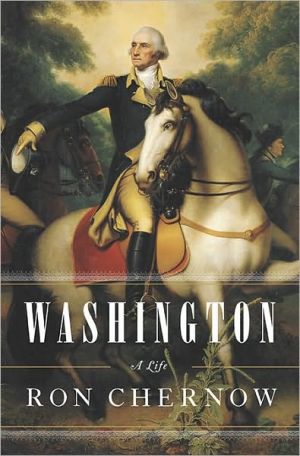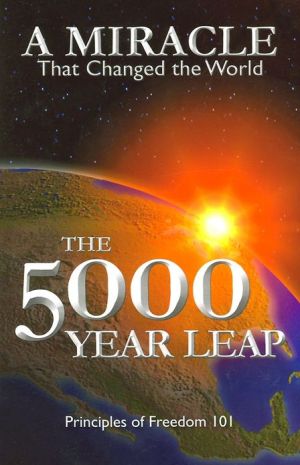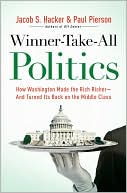Smogtown
Named one of 2009's best environmental books by Booklist magazine; awarded co-silver medal for best non-fiction work at The Green Book Festival, co-silver medal for best environmental/ecology work at the Independent Book Publishers (IPPY) Awards and winner of the Green Prize for Sustainable Literature from Santa Monica.\ The smog beast wafted into downtown Los Angeles on July 26, 1943. Nobody knew what it was. Secretaries rubbed their eyes. Traffic cops seemed to disappear in the mysterious...
Search in google:
Named one of 2009's best environmental books by Booklist magazine; awarded co-silver medal for best non-fiction work at The Green Book Festival, co-silver medal for best environmental/ecology work at the Independent Book Publishers (IPPY) Awards and winner of the Green Prize for Sustainable Literature from Santa Monica.The smog beast wafted into downtown Los Angeles on July 26, 1943. Nobody knew what it was. Secretaries rubbed their eyes. Traffic cops seemed to disappear in the mysterious haze. Were Japanese saboteurs responsible? A reckless factory? The truth was much worse—it came from within, from Southern California's burgeoning car-addicted, suburban lifestyle.Smogtown is the story of pollution, progress, and how an optimistic people confronted the epic struggle against airborne poisons barraging their hometowns. With wit, verve, and a fresh look at history, California based journalists Chip Jacobs and William J. Kelly highlight the bold personalities involved, the corporate- tainted science, the terrifying health costs, the attempts at cleanup, and how the smog battle helped mold the modern-day culture of Los Angeles. There are scofflaws aplenty and dirty deals, plus murders, suicides, spiritual despair, and an ever-present paranoia about mass disaster.Brimming with historic photographs, forgotten anecdotes, and new revelations about our environmentally precarious present, Smogtown is a journalistic classic for the modern age. Publishers Weekly Encapsulating deftly the worldview, historical context, and public psychology of Southern Californians over a number of decades, Los Angeles journalists Jacobs and Kelly examine the approaches they've made to the region's chronic pollution issues, many of which presage current, nation-wide trends in both pollution and its "Greening." With casual language and a cinematic sense of the dramatic, Jacobs and Kelly detail the buildup to the famous orange-brown L.A. smog of the 1950s and '60s: "Just at that moment, the beast started to evolve... Sometime in the late 1950s, legend had it that a hen laid an egg that L.A. pollution unaccountably turned green." Highlighting the pioneering people and groups that blazed the trail for the environmental movement, Jacobs and Kelly also explore the progress and setbacks established by policymakers, including a famously conflicted Ronald Reagan. Finished with a particularly powerful, forward-looking epilogue, this friendly, accessible history should appeal to any American environmentalist. 15 b & w photos. Copyright © Reed Business Information, a division of Reed Elsevier Inc. All rights reserved.
Smogtown Acknowledgments Preface\ 1. State of Siege\ 2. Paradise Obscured\ 3. Dutchman Over the Pacific\ 4. L.A. Against the World\ 5. Campus Life at Smog State U.\ 6. Roadtrap\ 7. Bouffants and Stethoscopes\ 8. The People's Revolt\ 9. Brown vs. Brown\ 10. The Wizard of Ozone\ 11. Searching for Perpetual Motion\ 12. He Got the Goldmine, They Got the Shaft\ 13. Action Heroes?\ Epilogue: Conjuring Haagy's Ghost Notes Index
\ Publishers WeeklyEncapsulating deftly the worldview, historical context, and public psychology of Southern Californians over a number of decades, Los Angeles journalists Jacobs and Kelly examine the approaches they've made to the region's chronic pollution issues, many of which presage current, nation-wide trends in both pollution and its "Greening." With casual language and a cinematic sense of the dramatic, Jacobs and Kelly detail the buildup to the famous orange-brown L.A. smog of the 1950s and '60s: "Just at that moment, the beast started to evolve... Sometime in the late 1950s, legend had it that a hen laid an egg that L.A. pollution unaccountably turned green." Highlighting the pioneering people and groups that blazed the trail for the environmental movement, Jacobs and Kelly also explore the progress and setbacks established by policymakers, including a famously conflicted Ronald Reagan. Finished with a particularly powerful, forward-looking epilogue, this friendly, accessible history should appeal to any American environmentalist. 15 b & w photos. \ Copyright © Reed Business Information, a division of Reed Elsevier Inc. All rights reserved.\ \ \ \ \ Library JournalStarting with the notorious cloud bank that first engulfed the city on July 26, 1943, Los Angeles writers Jacobs and Kelly chronicle six decades of smog and human attempts to destroy it, control it, and live with it in the City of Angels. Writing in a hip, lively style, they recount the efforts of city and state officials, governing boards, scientists, and citizen groups to rid L.A. of the smog with a can-do spirit and an unlimited faith in science, technology, and human ingenuity. This has included mass transportation, electric cars, and huge smoke stacks to carry the smog high above the city. However, the authors note that few people wanted to accept the fact that they, as part of a consumer-driven society based on the automobile, were the reason for "the enemy of their own making," which today contributes to global warming. This intriguing social history of an environmental problem that won't go away is recommended for libraries with regional and environmental collections.\ —Patricia Ann Owens\ \ \ \ Kirkus ReviewsThis colorful history of smog in Los Angeles begins in the 1940s and ends with a warning call for action.\ Self-proclaimed "survivors" of "L.A.'s greatest crisis," journalist Jacobs (Wheeling the Deal: The Outrageous Legend of Gordon Zahler, Hollywood's Flashiest Quadriplegic, 2008) and California Energy Circuit senior correspondent Kelly (Home Safe Home: How to Make Your Home Environmentally Safe, 1990) draw on newspaper articles, scientific case studies, policy books and oral-history archives to dredge up the story of smog in all its hazy—and sometimes humorous—permutations. It all began on July 8, 1943, when a blinding, "confounding haze" spread around unsuspecting Angelenos, birthing a decades-long battle against a toxic, shape-shifting monster. The side effects were sinister and wide-reaching: increased car accidents and cancer rates, ruined crops, suicides and even smog-induced mental conditions, like "globus hystericus," the formation of an imaginary lump that aroused the need to swallow constantly. Most remarkable, note the authors, was the push to develop sprawling, car-dependent communities even while L.A. officials and scientists were trying to combat the deleterious effects of automobile emissions. Jacobs and Kelly cover many familiar events and figures, such as the Rodney King riots, the early work of Ralph Nader and the legacies of Gov. Jerry Brown and then-Gov. Ronald Reagan. Awareness increased in the early '70s when doctors compared inhaling air on the most smog-ridden days as "tantamount to puffing a pack or two of cigarettes a day." By 1982 legislation was passed that required car smog checks every two years. In this tale of underhanded deals, gritty politics,community organizing and burgeoning environmentalism, the corruption is plentiful and the subplots replete with intrigue.\ Though the timelines are often confusing, the authors offer a zany and provocative cultural history.\ \ \








